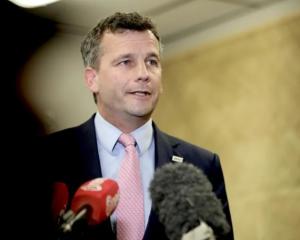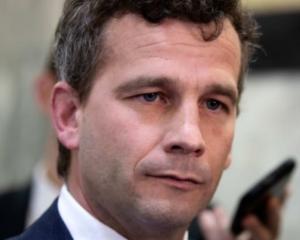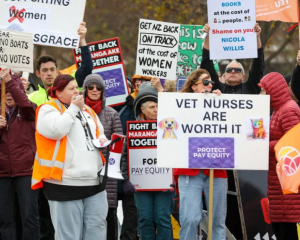
Three experts, former economist Sam Warburton, former Reserve Bank head of financial markets Michael Reddell and Corelogic head of research Nick Goodall, have done their own modelling on the plan using Corelogic property data.
They modelled three different scenarios, coming up with revenue estimates of between $212.7 million and $286.8m a year - well below the more than $700m in revenue National says it will raise from the policy each year. Those figures would leave a hole worth between $453.7m and $526.8m a year - up to $2.1b over the four-year forecast period.
The most generous estimate assumed 708 sales with an average sales price of $2.7m.
Reddell told the New Zealand Herald it was "almost beyond comprehension how you can get to a number as high as they [National] do".
The three are only the latest of several economists to question the assumptions behind the ban. National has repeatedly refused to release the details of their modelling and the full review of their tax promises, conducted by economics consultancy Castalia.
Instead, it released the basic assumptions and a summary of Castalia’s comments.
"I have given you what you need to see, which is a 32-page detailed document with costings in it, you have seen a reviewer’s report, and you’ve seen legal advice," National leader Christopher Luxon said.
National’s deputy leader Nicola Willis, on seeing the alternative costings said it was "hardly surprising to have different economists disagreeing about things".
"National is confident in our figures. They have been independently assessed by Castalia economic advisors.
"Our figures are conservative and assume that sales captured by the tax will be significantly less than half the number of sales to foreigners before the ban came into place," she said.
A spokesperson for Castalia said that the three economists’ "critique assumes that the removal of the ban will lead to a negligible number of investment transactions".
"In our view, this requires a belief that foreign buyers have been deterred from the New Zealand market by factors other than the ban. Castalia agrees with National’s assessment that return to previous trends is more likely to be accurate," they said.
"National’s modelling is based on the experience New Zealand had before the ban. We reviewed this modelling with reference to foreign buyer taxes in other jurisdictions, including Ontario, British Columbia, and Hong Kong. Our review included modelling of the reduction in purchases due to the imposition of the new tax. Hence, we believe the forecast number of sales to foreign buyers in National’s tax plan is reasonable and supports the overall revenue forecast in the plan," they said.
Economists pile into the tax
The three economists are not the only ones critical of the revenue assumptions behind the tax.
Property experts, including Valocity senior research analyst Wayne Shum, also cast doubt on the figures.
Shum told The Post that New Zealand only sold about $11.5b of houses worth more than $2m last year. Foreign buyers would need to make up 43 per cent of those sales in order to make National’s numbers stack up.
Other economists thought the figures seemed possible, but unlikely.

Bagrie said he expected to see a "bounce in the first year" as a result of pent-up demand following the ban being lifted.
He had other concerns with the policy, warning it was "likely to drive wealth inequality".
Infometrics chief economist Brad Olsen believed the numbers were "plausible but optimistic".
"I think mathematically they can have them work but it would require a large proportion of foreign buyers to be buying a large proportion of those more expensive properties," Olsen said.
He said there were "more $2 million homes to be bought" than before the ban was enacted in 2018, but it is now a matter of whether they could be delivered.
Other economists were more critical. They include the likes of Sense Partners economist Shamubeel Eaqub, who described the figures as "bullshit" on Newshub Nation.
New Zealand Initiative economist Eric Crampton was slightly more optimistic, saying that a few very large sales could skew the revenue. He was reluctant to weigh-in too much to the costings without seeing the modelling behind them.
"Taxing foreign buyers is better than banning them from purchasing houses. New Zealand has an ‘it’s too hard to build’ problem, not a foreign-buyer problem," Crampton said.
"I’d be nervous about making a hard call on National’s revenue numbers on the foreign buyer tax without having access to the underlying workings. If there are a lot of properties that transact in the $10-million-plus range, it wouldn’t take many such sales to hit the annual revenue figures National has suggested."
The ban
National has said it would pay for the $14.6b cost of the tax cuts with a mixture of spending cuts and tax rises. This would mean the plan is fiscally neutral and does not add to inflation.
However, economists question whether the $2.9b National plans to raise from its foreign buyers’ tax will actually eventuate, leaving National with an inflation-inducing hole in its fiscal plan.
The tax works by levying a 15 per cent fee on the sale of homes worth more than $2m to foreign tax residents. The tax would require $20b of property to be sold to foreigners over the forecast period
National modelling reckons it can hit that target, based on assumptions from property sales to foreigners before the ban and property values in areas foreign buyers tend to purchase, like Auckland and Queenstown. Those assumptions were certified by economics consultancy Castalia, but National has been unable to put up any other economist to stand by the numbers.
National has deflected concerns about the legality of the plan, with former IRD deputy commissioner Robin Oliver saying the ban would be able to comply with New Zealand’s tax treaties.
The modelling
Reddell said that the modelling done by the economists was potentially on the optimistic side because it did not consider the fact that foreigners buying these homes would need to pay 15 per cent more for them.
"The evidence from places like Canada, Vancouver, and Toronto is that there’s quite a strong negative demand effect," he said.
"I am pretty confident that $20 million is actually a ceiling on what they are likely to get."
Reddell agreed that even if the numbers stacked up, the nature of the ban meant it could be inflationary, because it would attract money from overseas to fund tax cuts that would be predominantly spent in New Zealand.
"That’s right," Reddell said.
"I think one of the things to bear in mind with a lot of this stuff is that to my mind, it goes more to their credibility in managing their processes than it does to the macroeconomics.
"Even if their numbers are wrong, $450 million is 0.1 per cent of GDP in the context of the 2.7 per cent of GDP deficit, the inflationary effect from that revenue not coming from New Zealanders, but coming from foreigners is not much more than that. It’s the sort of number might give you five basis points in the Reserve Bank’s model. It’s not going to give you more than that," he said.
"The macroeconomics goes in the wrong direction but it’s not of earth-shattering economic significance.
"To my mind, it goes more to their credibility in managing their processes than it does to the macroeconomics."
Thomas Coughlan is deputy political editor of the New Zealand Herald, which he joined in 2021. He previously worked for Stuff and Newsroom in their Press Gallery offices in Wellington. He started in the Press Gallery in 2018.












